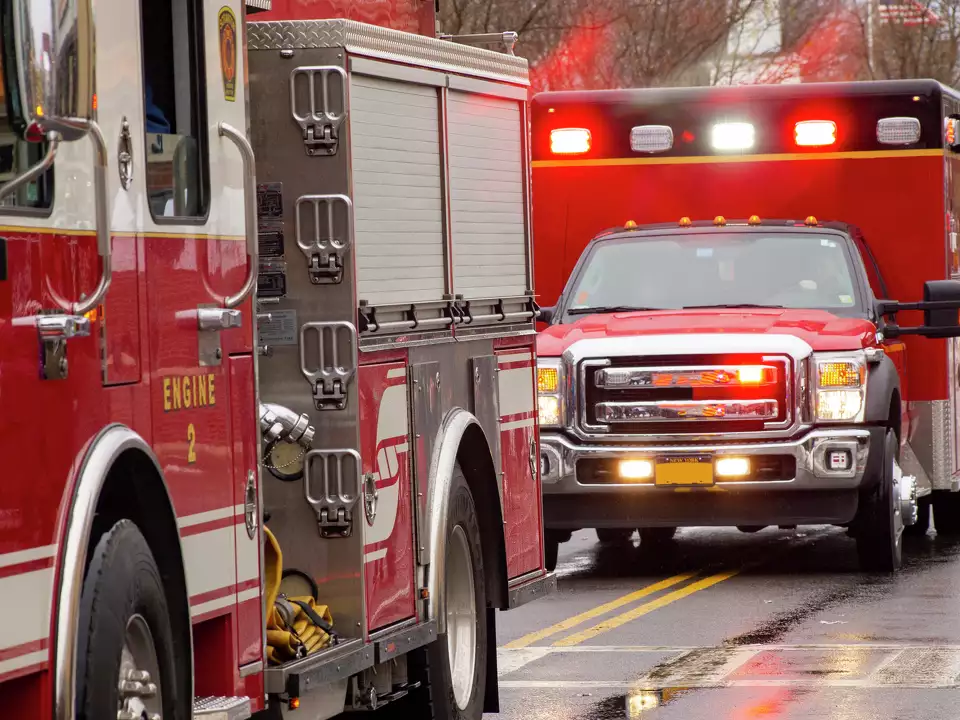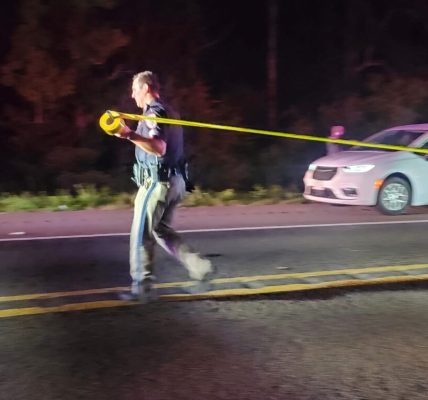In the heart of Albia, Iowa, a quiet town steeped in history with its 92 buildings listed on the National Historic Register, a devastating fire tore through the iconic R.O. Cramer building on July 14, 2025, leaving a community in mourning and a mystery yet to be fully unraveled. The blaze, which illuminated the night sky in the Albia town square, not only reduced a historic structure to rubble but also revealed a heartbreaking loss: the death of 61-year-old Kelly Rea Cummings, a beloved local resident. As the embers cooled and the investigation deepened, authorities uncovered a poignant twist, revealing that Cummings’ death was not a consequence of the fire but a separate, natural event, leaving the town grappling with both grief and unanswered questions.
The R.O. Cramer building, a cornerstone of Albia’s historic downtown, stood proudly among the late 19th and early 20th-century architecture that defines the town’s charm. On that fateful July evening, flames erupted, engulfing the structure in a fierce inferno that demanded the full force of multiple fire departments to contain. The fire’s ferocity prompted an immediate evacuation of the surrounding area, as emergency crews battled tirelessly to prevent the blaze from spreading to neighboring buildings. Despite their efforts, the R.O. Cramer building was left a charred skeleton, deemed uninhabitable, its once-vibrant facade now a haunting reminder of the destruction.
The following day, as investigators sifted through the smoldering debris, they made a grim discovery: human remains within the wreckage. The Monroe County Sheriff’s Office, leading the investigation, sent the remains to the state medical examiner for identification and autopsy. The community held its breath, awaiting answers. Days later, authorities confirmed the remains belonged to Kelly Rea Cummings, a 61-year-old Albia resident known for her quiet kindness and deep roots in the town. The announcement sent ripples of sorrow through Monroe County, where neighbors and friends struggled to process the loss of one of their own.
Yet, the story took an unexpected turn. Preliminary autopsy results revealed that Cummings had died of natural causes before the fire consumed the building. Her passing, investigators concluded, was unrelated to the blaze—a revelation that both eased and complicated the community’s grief. While it absolved the fire as the cause of her death, it raised new questions about the timing and circumstances of the tragedy. How had Cummings come to be in the R.O. Cramer building? And what had sparked the fire that so swiftly destroyed a piece of Albia’s heritage?
The investigation into the fire’s origin remains ongoing, with fire marshals and sheriff’s deputies working diligently to piece together the puzzle. Evidence is being meticulously reviewed, from potential ignition sources to structural factors that may have fueled the blaze’s rapid spread. Witnesses have been interviewed, their accounts painting a picture of a sudden and overwhelming fire that caught the town off guard. Authorities have yet to determine whether the fire was accidental—a spark from faulty wiring or a careless mishap—or something more sinister, like arson. The absence of clear answers has left a cloud of uncertainty hanging over Albia.
The community, known for its resilience and pride in its historic roots, has rallied in the face of this dual tragedy. Vigils and gatherings have sprung up, with residents sharing memories of Kelly Rea Cummings, whose life touched many in this close-knit town. “She was the kind of person who always had a smile, no matter the day,” one neighbor recalled, her voice thick with emotion. Others expressed gratitude for the firefighters who risked their lives to save a miniature replica of the Iwo Jima statue, a cherished monument honoring American soldiers and veterans, housed within the Edward Jones office in the R.O. Cramer building. The statue’s rescue amid the chaos became a small beacon of hope in an otherwise devastating scene.
The Monroe County Sheriff’s Office has urged anyone with information about the fire to come forward, emphasizing that even the smallest detail could unlock the mystery of its cause. While officials have assured the public that there is no immediate threat to safety, the ongoing investigation awaits final autopsy and toxicology reports to confirm the preliminary findings about Cummings’ death. These results, combined with the fire marshal’s conclusions, are expected to shed further light on the sequence of events that led to this heartbreaking chapter in Albia’s history.
As the town square stands quieter now, its once-bustling R.O. Cramer building reduced to a scarred relic, Albia holds fast to its sense of community. The loss of Kelly Rea Cummings and the destruction of a historic landmark have left wounds that will take time to heal. Yet, in the face of uncertainty, the people of Monroe County remain steadfast, seeking answers, honoring their past, and looking toward a future where the spirit of their town endures. For now, they mourn, they reflect, and they wait—united in their resolve to uncover the truth behind the fire that changed Albia forever.




